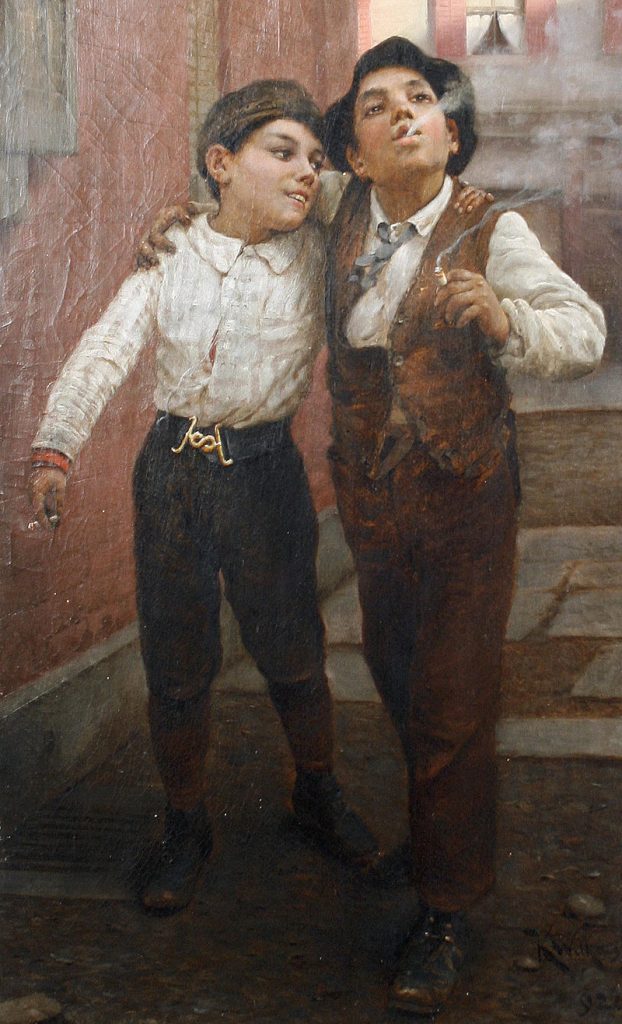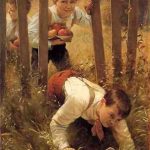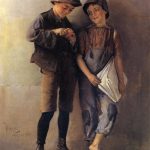
Karol Dominik Witkowski was born to a Polish family in Jazłowiec (Jaslowiec), near Buchach, Czortków (Podole, Poland, now Ukraine). As a child, he showed a precocious talent for drawing and his parents sent him to school in Chortkiv (12 miles from Yazlovets). In 1879 he enlisted in the Austrian Army (19th-century southern Poland was occupied by Austria and was part of Galicia), where he gained popularity by making portraits of fellow soldiers and commanding officers, including a portrait of General Duke William of Württemberg and a portrait of Lieutenant Field Marshal Emanuel Salomon Friedberg-Mírohorský. This army officer also was a genre painter. He may have influenced Karl Witkowski in becoming a genre painter himself. In 1880 Witkowski left the army and moved to Kraków, where from 1881 to 1883 he studied arts at the Academy of Fine Arts under the directorship of Jan Matejko. Witkowski also studied arts in Munich under Karl von Piloty. Around 1884 Witkowski emigrated from Poland, like many others, and went to America, where he stayed for three years. During that time he created his first famous paintings of young people. In 1887 he left America and arrived in France. In Paris Witkowski studied at the Julian Academy (1887-1888) and continued to work on paintings and portraits. Most of his paintings were done there he signed with the added initial of the author’s second name (K.D. Witkowski). Some of Witkowski’s paintings were done in France: Portrait de Tomas Milatycki, Mother with Children.
Back to America
In 1889 Witkowski returned to America and stayed for over 20 years until his death. During those years, besides portraits of the elite in New York City and Newark areas, he made over 200 paintings of young people (mostly newsboys and shoeshine boys), their daily life, at work and at play, often with their pets. The style of these paintings recalls the style of John George Brown to some extent. Most of these paintings were signed ”K. Witkowski”. From 1891 until his death his paintings were available for sale at various auctions and picture galleries in New York City area. For some time he had his own studio in Brooklyn, New York (1903).
Upon his arrival in the United States in 1884, Witkowski lived in New York City (from 1884 to 1887 and again from 1889 to 1891), later moving to Newark in 1891, and then to Irvington, South Orange, and Vailsburg, Newark.
Witkowski died on May 17, 1910, in Newark, from blood poisoning, survived by his wife. Witkowski died at the height of his artistic powers. In 1909 he registered 8 paintings through the United States Copyright Office and in just a few months of 1910 he created and registered 14 pieces more, also in the last months of his life, he exhibited his work at the State Fair of Texas and galleries of New York City. Source: Wikipedia.




